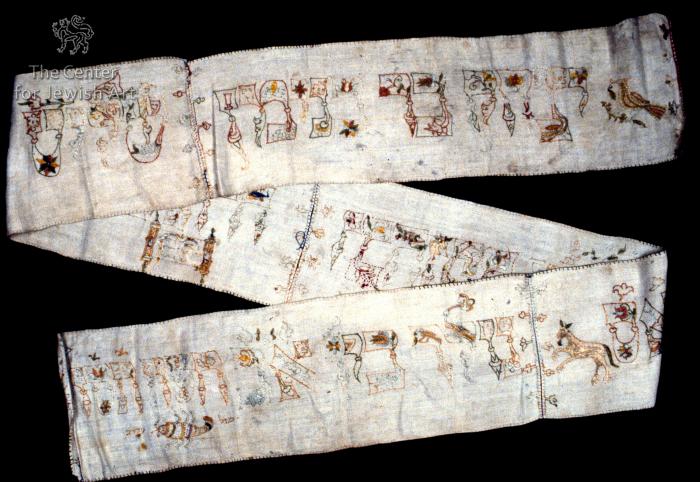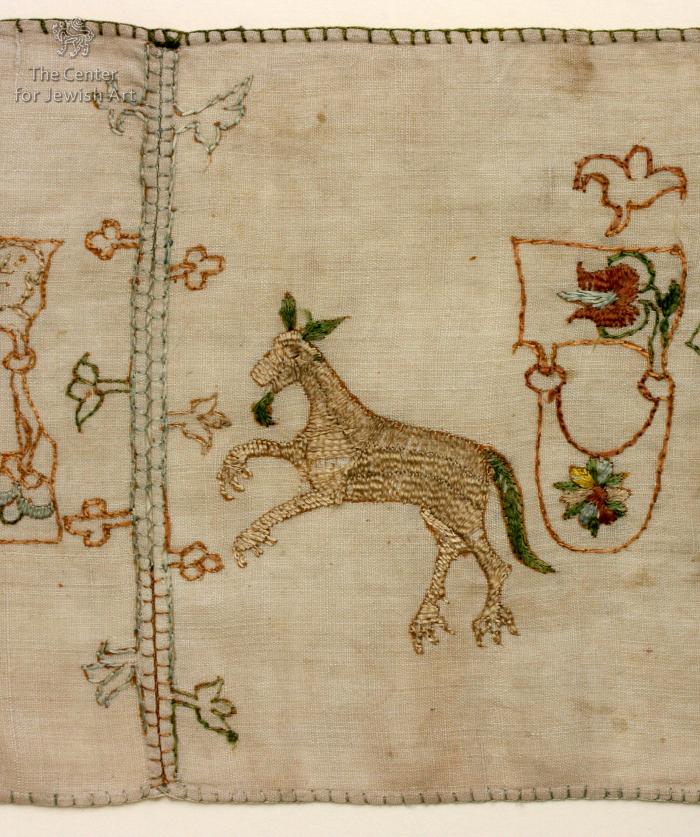Obj. ID: 39287 Wimple (Torah binder), Ichenhausen, 1707

sub-set tree:
The following description was prepared by William Gross:
The custom of the Wimpel or Torah Binder stretches back some 500 years at least in the world of classic Ashkenaz, the German speaking lands. The cloth which held the child at the time of his circumcision, almost always of linen, was cut into strips and sewn into a long textile. On this lengthy cloth was embroidered or painted a formulaic inscription, blessing the child and wishing that he grow up to "the Torah, the Chupah and good deeds". The beginnings of the custom were executed on linen cloth with silk embroidery. In the late 18th century the custom passed to painting on the textile with substantial illustration, although late examples of embroidered Wimpels do exist. Wimpels in the Gross Family Collection have their origin from Germany, Denmark, the Czech lands, Luxembourg and Alsace. The Wimpel served as a Torah Binder, being brought to the synagogue for use on the child's first birthday, his Bar Mitzvah and the Shabbat Chatan before his marriage.
ELABORATE EMBROIDERED LETTERS, TORAH, HORSE(?). SIMILAR STYLE TO OTHERS WHICH ARE FROM THE ICHENHAUSEN GENIZA IN A UNIQUE STYLE APPARENTLY LIMITED TO THAT CITY. THIS EXAMPLE IS ONE OF THOSE FEW IN WHICH THE SEAMS BETWEEN THE SECTIONS OF CLOTH ARE ALSO EMBROIDERED. SEE EXAMPLE #3 IN THE CATALOGUE "MAPPOT". THIS IS ALSO ONE OF THOSE RARE WIMPELS IN WHICH THE DATE OF BIRTH IS RECORDED AT THE END OF THE WIMPEL RATHER THAN IMMEDIATELY FOLLOWING THE NAME.
Name: Yitzhak bar Binyamin













